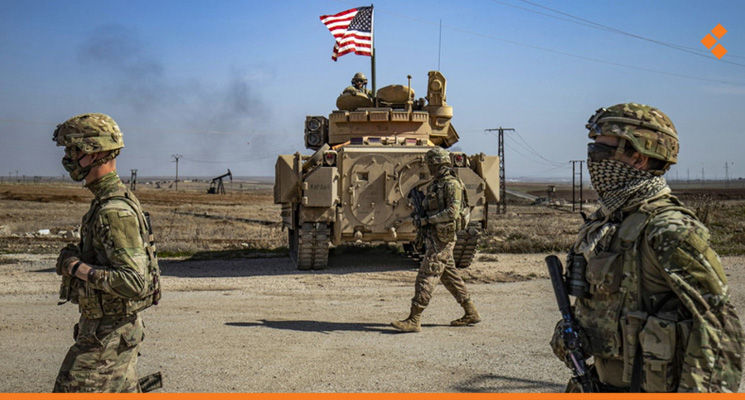
The U.S. wants to obstruct the resistance axis extending from Tehran to Beirut through the Syrian-Iraqi border, according to Athr Press.
Over the past few months, Syria has become a theater of heightened US military presence, particularly in the eastern and southern regions, with the Syrian Al-Tanf area serving as a focal point for these developments. The surge in US military movements includes the deployment of reinforcements and the provision of military training. Leaks from insider sources suggest that Washington is contemplating the creation of a force comprising Arab units. The escalating momentum of these activities has led to speculation about the potential initiation of a military operation.
Lebanon’s Al-Akhbar newspaper featured an article by writer Muhammad Noureddine, in which he construed these movements as indicative of Syria’s escalating field tensions.
The daily remarked, “The signs of escalation in Syria have manifested through various indicators, such as Russian airstrikes targeting armed groups near Idlib, clashes between the Syrian army and these groups along multiple frontlines, and the growing proximity of Russian and American aircraft in Syrian airspace.
Additionally, there’s the near-daily Israeli airstrikes in the vicinity of Damascus.” Noureddine connected the dispatch of 3,000 US troops to the Gulf region to Washington’s exerted pressure on Tehran within Syria. He revealed that the US is in the process of forming an Arab tribal force, numbering nearly 2,500, which is set to be stationed in regions spanning Deir ez-Zor and the borderlands of Syria and Iraq. This strategy aims to sever supply lines and communication routes beneficial to the resistance axis linking the two countries.
Further insights emerged from the Al-Mayadeen website, another Lebanese network, which carried an article by Syrian writer Joe Ghanem. Ghanem underscored the intensification of American aggressive actions in eastern Syria, underscoring renewed occupation designs in regions such as Badia, Deir-ez-Zor, Al-Hassakeh, and Raqqa. He noted the recent calls for reinforcements and a buildup of weaponry by the US occupation forces’ leadership. Ghanem disclosed that the US strategy pivots toward greater reliance on Arab elements, with an aim to direct their movement toward Al-Bukamal and the surrounding territories, where Syrian army, auxiliary, and friendly resistance forces are stationed. The ultimate objective is to establish an enclave stretching from the Jordanian border to the northeastern regions, enabling unrestricted Israeli movement.
This move would also obstruct the resistance axis extending from Tehran to Beirut through the Syrian-Iraqi border. Ghanem highlighted the Syrian army’s preparation, supported by Iranian and Russian allies, with significant military maneuvers conducted in recent weeks. He added that Moscow is actively engaging in dialogues with Kurdish groups to deter their participation in the impending conflict.
In a piece from the Turkish newspaper Yeni Safak, closely linked to Turkish authorities, a columnist assessed the unfolding situation in Syria within the framework of a new American strategy. Afroglu emphasized that after thirteen years of Syrian conflict, the US is reshuffling its cards, exemplified by the deployment of approximately 3,000 militants along the Deir ez-Zor-Al-Tanf line, with the intention of obstructing the Iraq-Syria route.
Since last March, Russian intelligence services have been alerting to the various military moves orchestrated by US forces in Syria. These actions, coinciding with increased Arab engagement with Syria, commenced following the visit of US Chief of Staff Mark Milley to American bases in the eastern and Al-Tanf regions of southern Syria.
